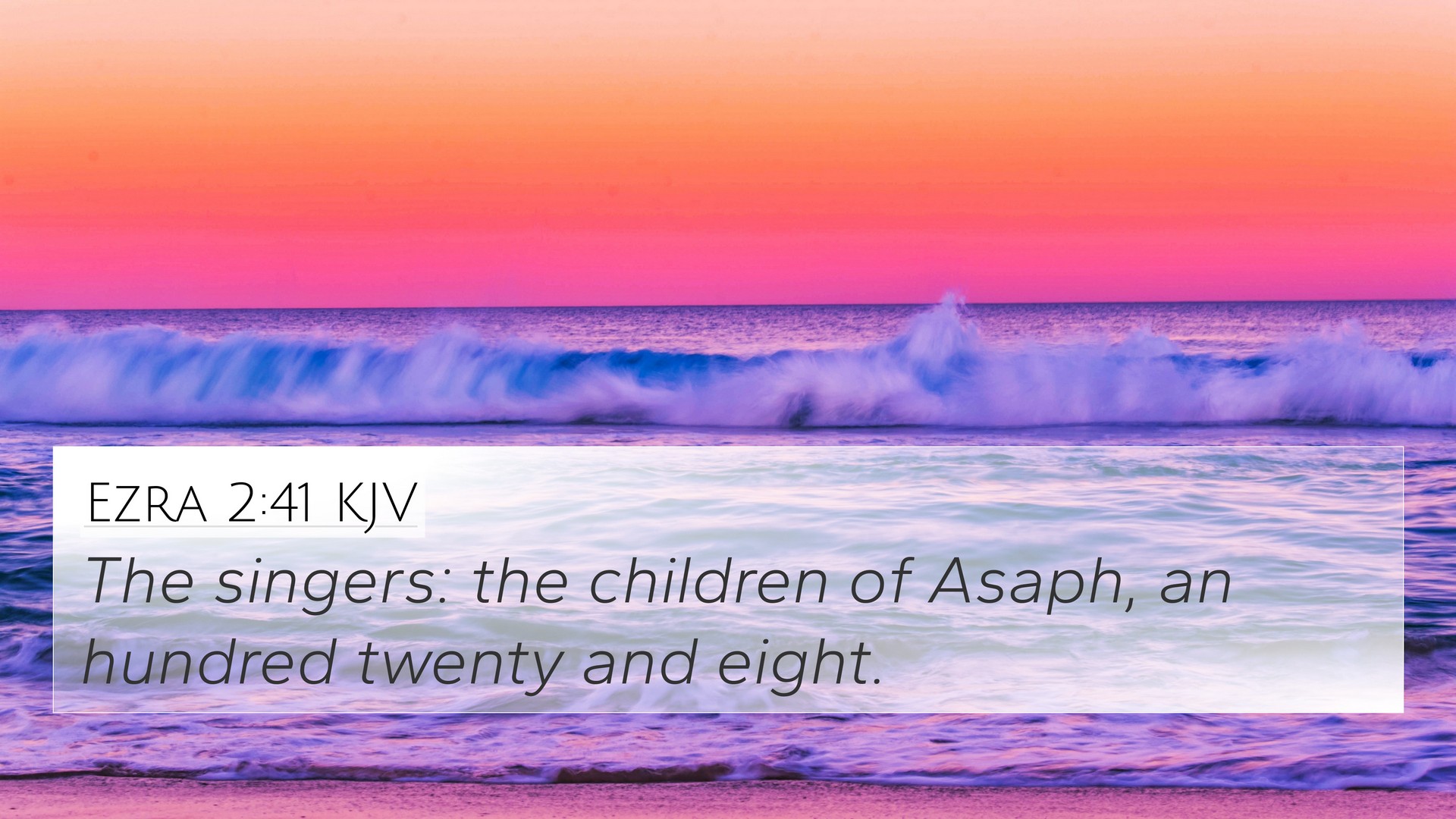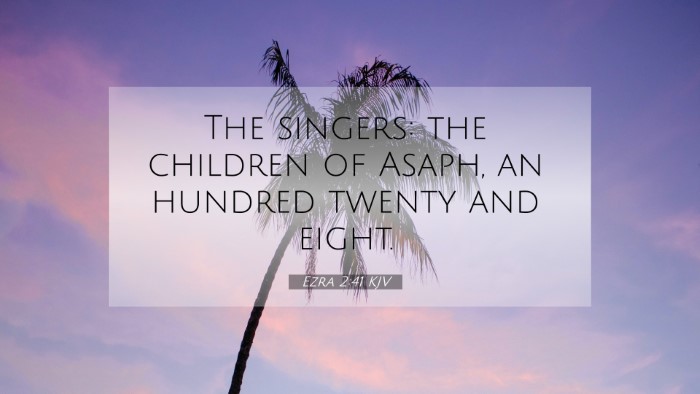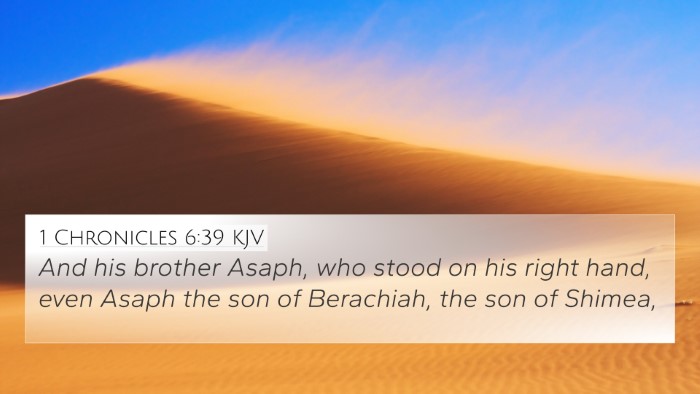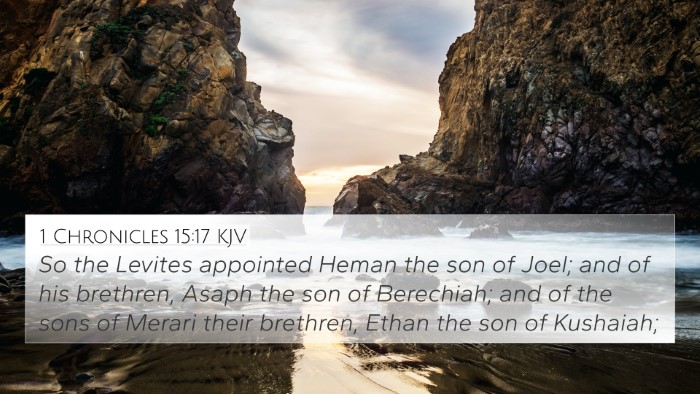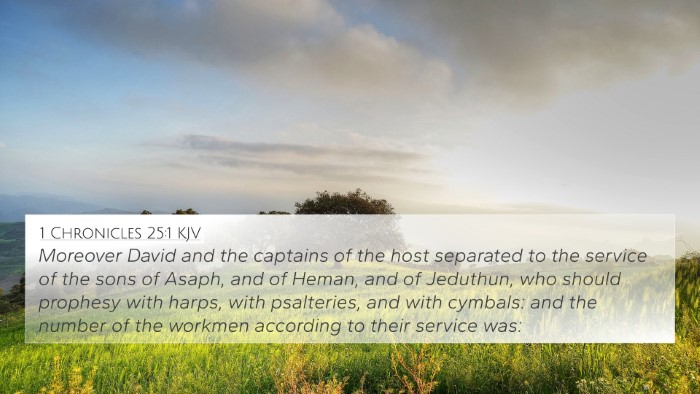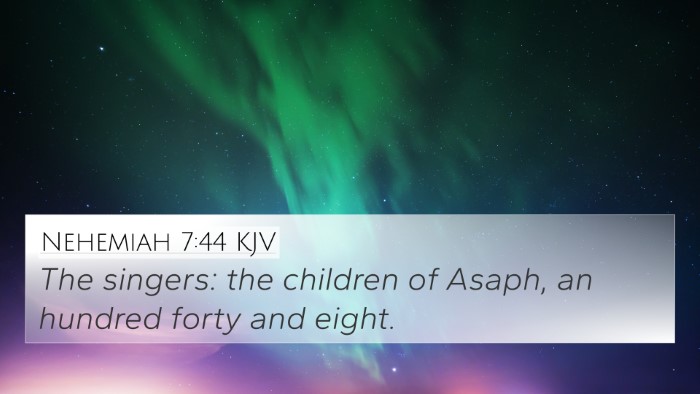Understanding Ezra 2:41
Ezra 2:41 presents a list of the temple servants who returned to Jerusalem after the Babylonian exile. This verse is nested within a narrative that highlights the restoration of the Jewish community and their religious practices.
Summary of Ezra 2:41
This verse specifically mentions the "sons of Solomon's servants," indicating a continuation of lineage and service to the temple, essential for the worship and functioning of the community. The return of these servants symbolizes the reinstatement of order and devoted service in the restored community.
Key Insights from Public Domain Commentaries
- Matthew Henry: Henry emphasizes the importance of the temple servants in the worship of God, reflecting on how their roles were essential during the rebuilding. Their return indicates God’s faithfulness to His people and the restoration of worship.
- Albert Barnes: Barnes discusses the historical significance of these servants being listed, showing that the returning exiles were not merely a random group but included individuals with a specific purpose in God’s plan of redemption and continuity in worship practices.
- Adam Clarke: Clarke notes the significance of the servant's roles in temple rituals and how their listing helps to establish a sense of identity and purpose within the returning community, reaffirming their connection to Solomon and thus their historical and spiritual heritage.
Bible Verse Cross-References
In studying Ezra 2:41, we can draw connections to various other Scripture passages. Below are key cross-references that enhance our understanding of this theme:
- 1 Chronicles 9:2: Lists the temple servants and their roles, giving background to the service that is continued in Ezra's time.
- Nehemiah 7:46-56: Further delineates the list of temple servants and connects their roles to the mission of rebuilding Jerusalem.
- Ezra 8:20: Discusses the temple servants provided by Ezra, illustrating the organizational structure of worship.
- Luke 2:36-38: The role of Anna, a prophetess, emphasizes the theme of servant leadership in worship, reflecting continuity from the Old Testament.
- 1 Peter 2:9: Highlights the priesthood of all believers, connecting the idea of dedicated service in the New Covenant era.
- Hebrews 11:32-34: References past heroes of faith, linking their service to God's overarching plan, akin to the servants of the temple.
- Acts 6:1-6: Discusses the appointment of servants in the early church, thus reflecting a practice of dedicated service.
Thematic Connections
The themes of service, identity, and worship permeate Scripture and can be reflected throughout various Biblical texts. The servant motif connects through to modern applications of community and dedication to God’s work.
Scriptural Cross-Referencing for Deeper Insight
As believers study Ezra 2:41, they should consider the broader implications of temple service. The following provides insights into how to utilize cross-references effectively for biblical studies:
- Utilize a Bible concordance to find connections between verses.
- Engage in comparative Bible verse analysis to identify common themes.
- Employ a cross-reference Bible study guide to draw links between Old and New Testament themes.
- Implement tools for Bible cross-referencing to enhance sermon preparation.
Conclusion
In summary, Ezra 2:41 serves as a critical junction for understanding the roles within God’s community of faith, and the insights from reputable biblical commentaries reveal the depth and historical significance of this verse. Through effective cross-referencing of biblical texts, believers can discover a rich tapestry of connections that enhance both personal faith and communal worship.
